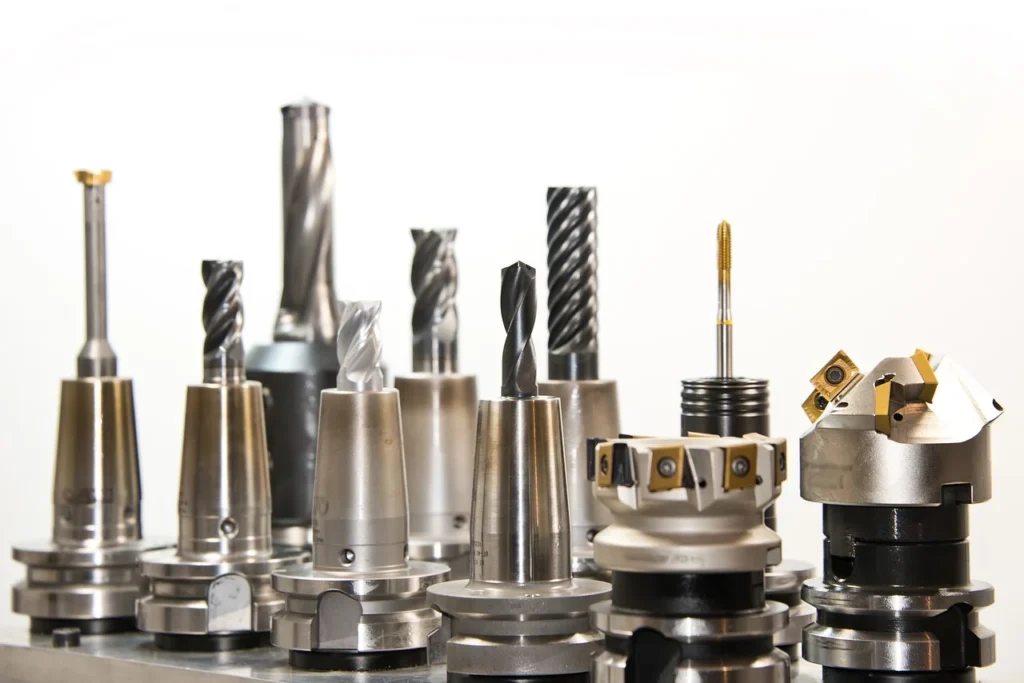Walk into any modern machine shop or browse an online catalog, and you’ll find yourself swimming in a sea of tool types—end mills, face mills, thread mills, ball nose cutters, inserts, reamers, and more. And that’s just the beginning of milling tools. With every tool designed for a specific application, material, or finish, choosing the right one can feel like trying to solve a complex puzzle without the box.
But there’s a method to the madness. Milling tools aren’t just made to confuse machinists—they’re designed to deliver precision, speed, and efficiency across countless machining scenarios. If you’re wondering how to differentiate them and make better choices for your shop, you’re in the right place. Let’s break down the categories and clarify the role of cnc tooling in modern machining.
Why So Many Milling Tools?
The short answer: no one tool can do it all. Each type of milling cutter is purpose-built for a specific kind of cut, material type, or finish quality. Some are optimized for material removal, others for intricate features. Understanding the core categories helps you match the right tool to the job.
Here are some of the most common milling tools and their key uses:
- End Mills: Used for profiling, slotting, plunging, and contouring. Comes in flat, ball, and corner radius tips.
- Face Mills: Ideal for facing large surface areas quickly with high-quality surface finish.
- Thread Mills: Designed to mill threads instead of using taps; allow greater control and versatility.
- Ball Nose End Mills: Great for 3D contouring and surface finishing in mold and die work.
- Inserts: Replaceable cutting edges that reduce downtime and cost for high-volume operations.
- Chamfer Tools: Used to bevel edges or create countersinks for fasteners.
- Keyseat Cutters: Narrow, round tools for cutting keyways or slots.
Each tool also comes in various coatings (e.g., TiN, TiAlN), flute counts, and helix angles—details that further fine-tune the tool’s performance for materials like aluminum, steel, stainless, or titanium.
Additionally, how the tool is held matters just as much as the tool itself. Improper toolholding can cause deflection, chatter, or poor finishes. That’s where systems like lathe tooling come into play for turning centers, and toolholders and collets matter in milling operations.
Unlock deeper insights by diving into this related post crafted just for you.
How to Choose the Right Tool Without Guessing
Knowing your materials, your machine, and your end goals is the key to tool selection. Here’s how to make a more informed decision without falling into the trap of “trial and error”:
1. Understand the Operation Type
Is this a roughing operation or finishing pass? Slotting or contouring? High-speed or high-torque? The type of cut determines tool geometry.
2. Match Material with Tool Material and Coating
Use tools designed specifically for your workpiece material. Carbide with AlTiN coating, for instance, works well on hardened steel. Uncoated or polished tools are better for aluminum to reduce built-up edge.
3. Optimize Tool Size for Rigidity
Choose the largest diameter and shortest length possible for the job to minimize deflection and improve finish quality.
4. Check Machine Compatibility
Don’t pick a tool that your machine’s spindle can’t handle—whether due to RPM limits, torque, or toolholder fit. Look into ER collet systems to secure proper grip, especially for smaller diameter tools.
5. Use Tool Libraries in CAM Software
Modern CAD/CAM software often includes libraries that suggest tool types based on operation, material, and desired finish. Use them to reduce guesswork and standardize processes across the shop.
If you’re unsure what toolholding system to use, consider the benefits of high-precision collets, which provide superior concentricity, grip, and repeatability for many milling applications. Collets are especially useful when working with delicate parts or tight tolerances.
Final Thoughts
With so many tool options on the market, it’s easy to feel overwhelmed—but every milling tool exists for a reason. By learning the strengths of each and matching them to your material and machining goals, you can drastically improve your efficiency, surface finish, and tool life.
From roughing tools to finishing cutters, and from large face mills to precise thread mills, choosing the right cnc tooling starts with understanding your job’s unique requirements. And when paired with the right toolholding system and collets, you’ll not only get the job done—you’ll get it done right, every time.
Don’t miss out on our featured post — a must-read highlight tailored for you!






